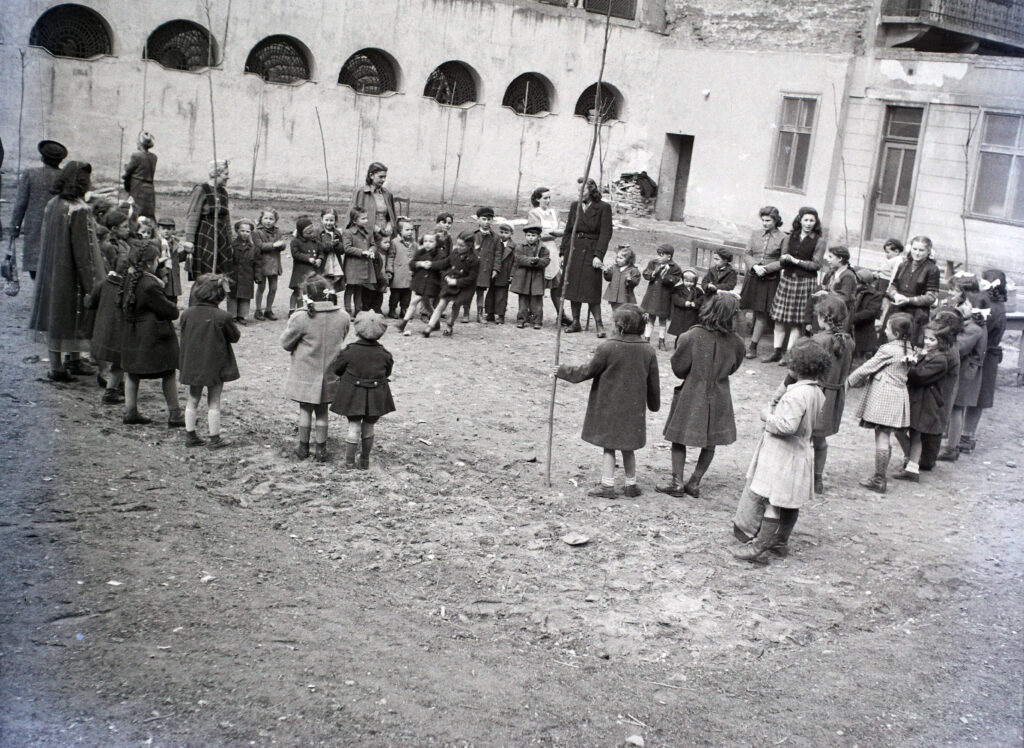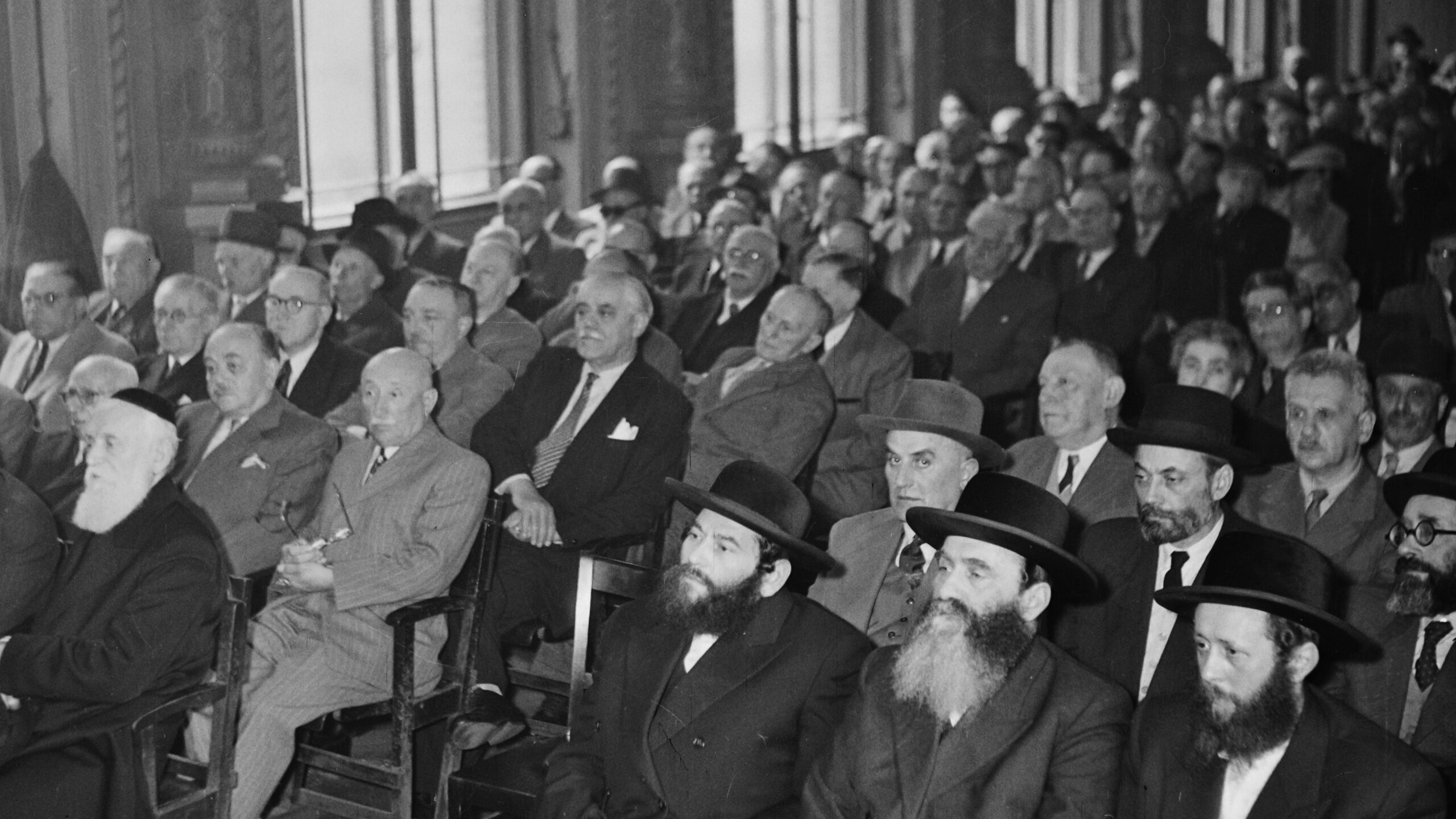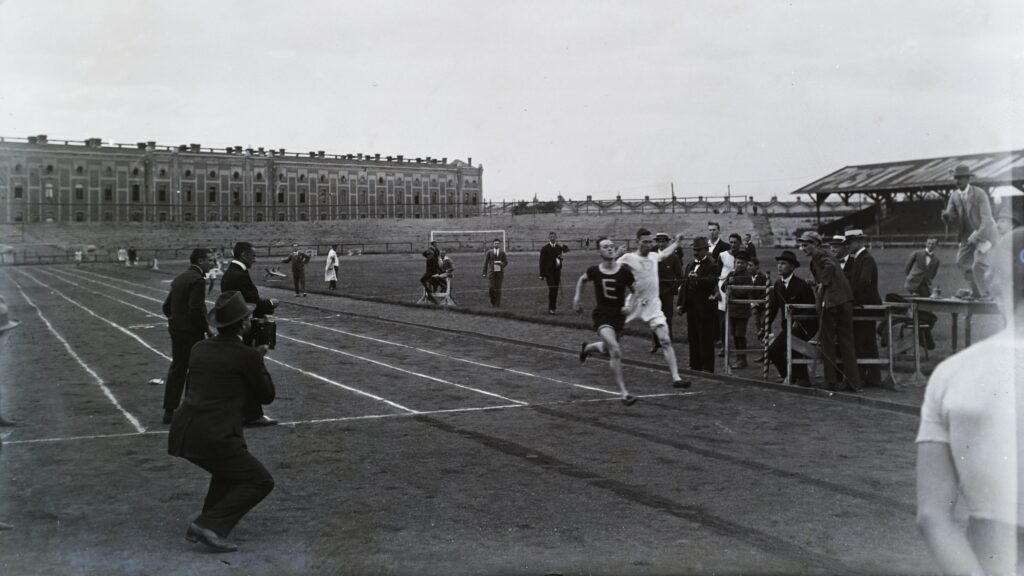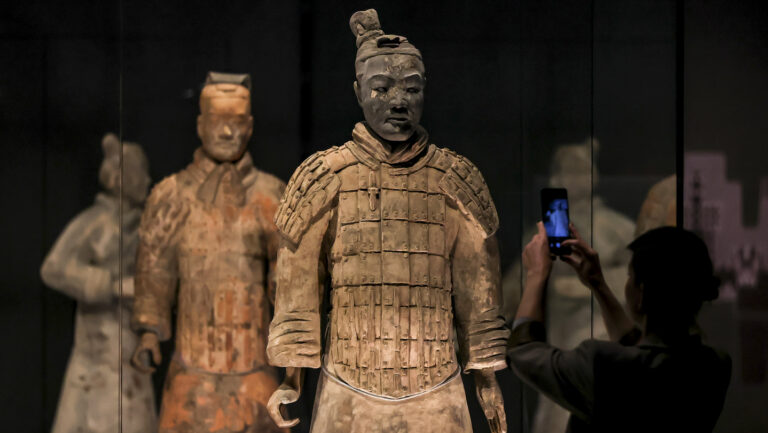As we have written several times in the Hungarian Conservative, the secret service of the Kádár regime continuously sought to infiltrate the ‘Israelite Church’ (in other words, the Jewish community), recruiting dozens of agents over the decades and occasionally achieving certain successes in their operational work. Interestingly, however, this activity was almost entirely limited to the Neolog community; there were far fewer Orthodox agents (and, it should be added, targets).
This can only partly be explained by the numerical minority status of the Orthodox community after 1944 and 1956. Although there were high-profile targets—such as Chief Rabbi Jenő Schück, an Orthodox leader—the secret service (which at the time of this story was not yet called the Ministry of Interior’s III/III Division) consistently faced the problem of not having enough Orthodox agents. The reasons behind this are at least partially revealed in the work file of a person treated as a potential agent under the cover name ‘Szabadkai’. The file consists of just 91 pages but has been preserved in the Historical Archives of the State Security Services. ‘Szabadkai’, who in civilian life was identical with Dezső Várnai, a dentist and the lay president of the Orthodox synagogue on Akácfa Street, offers insight into how the authorities tried to recruit an Orthodox community leader—and how they failed.
This effort appeared to be successful: as Tibor Takács explains in his book, by the 1980s, nearly the entire network of informants—at least 95 per cent—participated in secret cooperation out of ideological or patriotic conviction.[1] Between November 1956 and 30 June 1989, a total of 48,065 recruitments were carried out, but including reactivated former agents, at least 55,455 individuals were part of the network for shorter or longer periods during the Kádár era, according to the author’s findings. Including other categories, approximately 150,000 people passed through the political police’s agent network between 1945 and 1989—though, of course, never all at the same time. However, there were also individuals compromised and recruited under coercion (presszió), and who their handlers gradually tried to persuade to identify with the regime and engage enthusiastically in agent activity. What follows is the outcome of one such attempt, combined with the reluctance of an Orthodox leader to report on his fellow Jews.
The first document in ‘Szabadkai’s’ file dates to March 1959: Captain László Szikra recorded the contents of a meeting that took place at a café on Vörösmarty Square. According to the report, ‘Szabadkai’ had recently been under arrest in connection with a smuggling case, possibly involving gold, and had been released just days earlier. ‘“Szabadkai’s” task was to report how his release was received by those around him and at his workplace. In his family environment, using the legend we had agreed upon (ie, a cover story—LBV), he found that his wife accepted his release as natural…Regarding his sister, he observed that she resented him for the fact that the gold confiscated by the police had been found at her apartment.’[2]
‘It appears that “Szabadkai” was not fully exempt from criminal consequences despite his recruitment: he still had to prepare for trial’
It appears that ‘Szabadkai’ was not fully exempt from criminal consequences despite his recruitment: he still had to prepare for trial, but was allowed to remain free during the proceedings. State security clearly implied that if he cooperated, his case would be judged more favourably. ‘Szabadkai’ not only reported on his sister’s opinion, but also on that of his own wife and lawyer. ‘In the religious community, however, no one asked questions; there, people were mainly worried about the community’s money that “Szabadkai” had been safeguarding.’ At this point, Captain Szikra was still optimistic about the recruit: ‘I report that at the meeting, “Szabadkai” tried to answer every question in detail. I observed that his demeanour is now calmer. I briefly reiterated the points raised during the recruitment and emphasized that the course of his future depends primarily on the quality of his work and the sincerity of his conduct. “Szabadkai” stated that he fully understood the importance of this and would strive to live up to the trust placed in him.’
The next meeting, held a week later, was no longer as positive in tone. ‘Szabadkai’ clearly tried to steer the conversation toward his workplace and his fellow doctors, even though the secret police officer was primarily interested in a Jew named ‘Barzel’, who had travelled to Yugoslavia and maintained correspondence with members of the Budapest Orthodox Jewish community. ‘“Szabadkai” suggested that he knew several individuals at his workplace and in his surroundings who had reactionary leanings and that he would report on them to us. He tried to demonstrate that he was not an enemy of the regime and that he wanted to make amends for his crimes.’
At the next meeting, ‘Szabadkai’ brought a list of acquaintances, but it contained only the most basic information about them; from the religious community, he provided data on just two individuals. The secret police officer was still patient at this point: he asked the recruit to ‘gradually prepare himself—primarily mentally—to explore the possibilities that would make it possible to carry out the most important tasks.’ ‘From “Szabadkai’s” behaviour, I gathered that he still has certain inhibitions when it comes to naming specific individuals and especially when describing them, which is why the data he provided remains general.’ Here, Szikra specifically referred to ‘the naming of members of the Orthodox church’, ie Orthodox Jewry.
At the next meeting, the recruit brought 35 names, but aside from the list, he provided no descriptions of them whatsoever—even their ages were given only approximately. For some, he didn’t even write out the full name. The list included several members of the contemporary Orthodox religious life, such as Ignác Schőner, an employee of the congregation. Szikra now stated even more explicitly why the recruit was hesitant: ‘In my assessment, “Szabadkai” is trying to find excuses for…his friend(s), and the reason for this is “Szabadkai’s” Orthodox mindset.’ Therefore, Szikra once again reminded the recruit of ‘the seriousness of his crimes.’
The next document is a ‘meeting plan’ submitted by Szikra to his superiors, outlining how he intended to conduct the upcoming encounter. The first point was to ‘identify contradictions’ in what ‘Szabadkai’ had said so far about his Orthodox friends. He also planned to criticize ‘the minimal results of the reported connections’ (sic!), ‘his negative attitude toward us’, and the fact that ‘to date, he has essentially done no work and has only hindered effective cooperation. This could lead to the termination of contact and referral to judicial authorities.’ The tasks he intended to assign clearly included uncovering smuggling and espionage channels within the religious community. He also intended to ask the recruit to provide a detailed account of who in his circle was involved during the failed revolution of 1956. The meeting was to be held—clearly as a means of pressure—at the official premises of the Budapest Department of Police, on 31 March, with the involvement of multiple police officers.
At the meeting, the police officers clearly told ‘Szabadkai’ that ‘the time has come for him to stop constantly making excuses and begin working.’ They also wanted to receive mood reports ‘on the reactions to current domestic and foreign political events.’ Another task was ‘mapping the Orthodox congregation and establishing contacts with the senior church leaders. He has the opportunity to carry out this work as the president of the Akácfa Street Jewish synagogue.’ ‘Szabadkai’ responded by excusing himself, saying ‘he doesn’t have much time and doesn’t go to social gatherings.’ According to the case officer’s comment: ‘I pointed out to him that the work he is supposed to do primarily serves his personal interest, and if he doesn’t want to carry it out, we won’t force him. But I explained that we have no way of exempting him from judicial responsibility if he fails to meet the obligations he has taken on.’

The ‘rebuke’ had an effect in the sense that ‘Szabadkai’ brought a description to the next meeting, detailing which of his medical colleagues were members of the pro-revolution Workers’ Councils in 1956, but according to Szikra: ‘he did not provide a comprehensive picture of the Orthodox congregation.’ He wrote only very general things about the congregation, such as: ‘The Orthodox Branch is directly supervised by the leadership of the Pest Israelite Community. It operates like a subunit…’ He added: ‘I do not know the leadership of the Pest Israelite Community.’ Under instruction, he provided some well-known facts, such as the president of the MIOK being Endre Sós, the head of the Rabbinical Office being László Salgó, or that the secretary of the Orthodox congregation was a certain ‘Dr Sebestyén’. This was clearly a reference to Antal Sebestyén, the secretary responsible for kashrut matters,[3] but the recruit did not even bother to provide the full name of the man.
An interesting fact is that, in the meantime, ‘Szabadkai’ did indeed bring some reports about his colleagues in the hospital. For example, in April 1959, he reported what some of them thought about China. As far as can be determined, his medical colleagues were neológ Jews, but perhaps he felt that reporting on them was a less grave offence than reporting on his Orthodox brethren. However, later he also found objections to reporting on the doctors: ‘Unfortunately, I cannot write anything significant regarding the mood in the hospital. During working hours, the doctors are so busy that there is hardly any time to even talk about professional matters…Moreover, there are so many new doctors at the hospital now that I do not even know 90 per cent of them.’
In May of that year, he also visited Rabbi Jenő Schück, the Orthodox chief rabbi. He reported that Schück had a brother living in America and a sister in Israel. This was likely something the state security already knew. As Schück mentioned, he himself wanted to immigrate to Israel, but at 60 years old, this was no longer an easy task. From that point on, his report on Schück—who was also a target of state security surveillance and harassment under the Kádár regime—generally highlighted more positive aspects from the regime’s perspective: although the rabbi acknowledged the presence of antisemitism in Hungary, he said: ‘As long as this system is in place, we are fine, and we must pray that this system remains, because otherwise, the lives of Jews would be in danger.’ The report did not deceive the handler: ‘In my opinion, “Szabadkai” would like to appear to be carrying out the tasks related to the Israelite church, but due to his Orthodox convictions, we cannot expect tangible results.’
The last report from ‘Szabadkai’ came from December 1959, after which his file was closed. Although the reasoning for his exclusion has not been preserved, given the series of negative comments and warnings from his handler, it seems that the candidate’s Orthodox Jewish beliefs and his reluctance to report on his fellow Jews were the main factors. There is no indication that the judicial threats made against him were ultimately carried out, at least no reports indicate a successful criminal prosecution, and the individual remained a part of Orthodox public life until his death. According to his obituary, he passed away in October 1979, and at his funeral, his ‘religiosity, loyalty to his family, and dedication to his vocation’ were emphasized.[4]
In light of the above, ‘Szabadkai’ cannot be considered an agent, only a candidate, and his connection to the state security ended due to his reluctance and resistance—although it is also true that the usefulness of an agent was determined by the state security, not by the agents themselves, and sometimes even the seemingly most harmless information could have been useful to the secret police. However, in ‘Szabadkai’s’ case, there is no record of a positive evaluation from his handler. His case is a good example of how, despite the threat of criminal prosecution, one could avoid substantive agent work through passivity and sabotage.
[1] Takács Tibor, Ügynökök, informátorok, jelentések. Az állambiztonsági besúgóhálózat történetei, Bp, Jaffa, 2024, 56–57.
[2] All quotes are from this file, unless indicated otherwise: Állambiztonsági Szolgálatok Történeti Levéltára, 3.2.3. Mt-555/1.
[3] Novák Attila, ‘Szeretetcsomagból export. A magyar ortodox zsidóság szentföldi kóserkonzervakciója (1948–1957)’, Betekintő, 2023/3, 63–87, p. 64.
[4] Új Élet, 15 Nov 1979.
Related articles:







